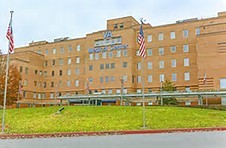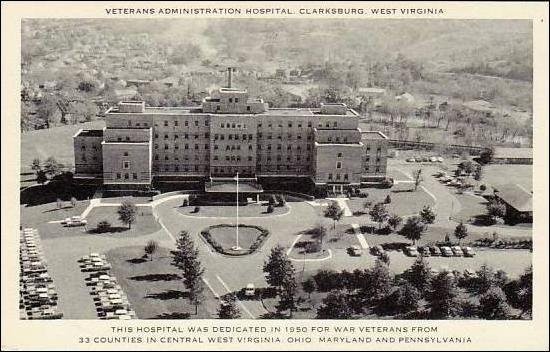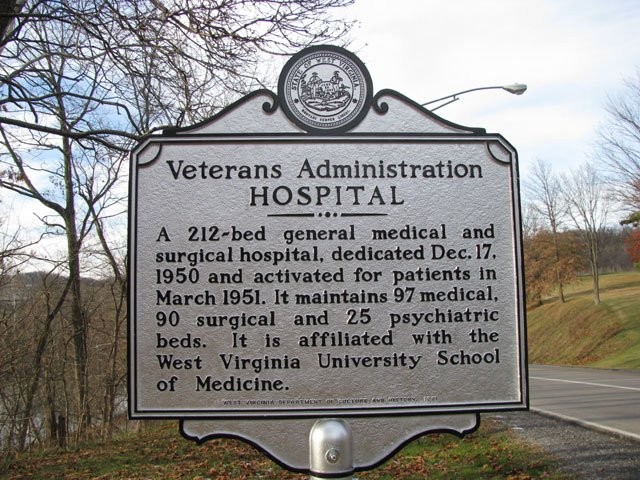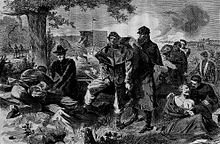Louis A. Johnson VA Medical Center
Introduction
Text-to-speech Audio
Images
Clarksburg VA Hospital current photo of entrance to building. Several improvements have been made to the facility since it dedication in 1950

Clarksburg Dedication Photo initially dedicated on December 7, 1950.

VA Hospital Sign

Surgeon completing duties during Civil War.

Backstory and Context
Text-to-speech Audio
The United States has the most comprehensive system of assistance for Veterans of any nation in the world, with roots that can be traced back to 1636, when the Pilgrims of Plymouth Colony were at war with the Pequot Indians. The Pilgrims passed a law that stated that disabled soldiers would be supported by the colony.
Later, the Continental Congress of 1776 encouraged enlistments during the Revolutionary War, providing pensions to disabled soldiers. In the early days of the Republic, individual states and communities provided direct medical and hospital care to Veterans. In 1811, the federal government authorized the first domiciliary and medical facility for Veterans. Also in the 19th century, the nation's Veterans assistance program was expanded to include benefits and pensions not only for Veterans, but for their widows and dependents.
Following the Civil War, many state Veterans homes were established. Since domiciliary care was available at all state Veterans homes, incidental medical and hospital treatment was provided for all injuries and diseases, whether or not of service origin. Indigent and disabled Veterans of the Civil War, Indian Wars, Spanish-American War, and Mexican Border period, as well as the discharged regular members of the Armed Forces, received care at these homes.
As the U.S. entered World War I in 1917, Congress established a new system of Veterans benefits, including programs for disability compensation, insurance for service personnel and Veterans, and vocational rehabilitation for the disabled. By the 1920s, three different federal agencies administered the various benefits: The Veterans Bureau, the Bureau of Pensions of the Interior Department, and the National Home for Disabled Volunteer Soldiers.
The first consolidation of federal Veterans programs took place August 9, 1921, when Congress combined all World War I Veterans programs to create the Veterans Bureau. Public Health Service Veterans’ hospitals were transferred to the bureau, and an ambitious hospital construction program for World War I Veterans commenced.
World War I was the first fully mechanized war, and as a result, soldiers who were exposed to mustard gas, other chemicals and fumes required specialized care after the war. Tuberculosis and neuro-psychiatric hospitals opened to accommodate Veterans with respiratory or mental health problems. A majority of existing VA hospitals and medical centers began as National Home, Public Health Service, or Veterans Bureau hospitals. In 1924, Veterans benefits were liberalized to cover disabilities that were not service-related. In 1928, admission to the National Homes was extended to women, National Guard and militia Veterans.
The second consolidation of federal Veterans programs took place July 21, 1930, when President Herbert Hoover signed Executive Order 5398 and elevated the Veterans Bureau to a federal administration—creating the Veterans Administration—to "consolidate and coordinate Government activities affecting war veterans." At that time, the National Homes and Pension Bureau also joined the VA.
The three component agencies became bureaus within the Veterans Administration. Brig. Gen. Frank T. Hines, who had directed the Veterans Bureau for seven years, was named the first Administrator of Veterans Affairs, a job he held until 1945.
Dr. Charles Griffith, VA’s second Medical Director, came from the Public Health Service and Veterans Bureau. Both he and Hines were the longest serving executives in VA’s history.
Following World War II, there was a vast increase in the Veteran population, and Congress enacted large numbers of new benefits for war Veterans—the most significant of which was the World War II GI Bill, signed into law June 22, 1944. It is said the GI Bill had more impact on the American way of life than any law since the Homestead Act of 1862.
Currently the Veterans Health Administration, part of the Department of Veterans Affairs, is a system of approximately 1,700 hospitals, outpatient clinics, counseling centers and long-term care facilities that provides care to nearly 9 million veterans annually.
Cite This Entry
Gourn, Patrick . "Louis A. Johnson VA Medical Center." Clio: Your Guide to History. September 29, 2017. Accessed July 28, 2025. https://theclio.com/entry/45025
Sources
U.S. Department of Veterans Affairs | 810 Vermont Avenue, NW Washington DC 20420
https://www.va.gov/ Official Website
https://en.wikipedia.org/wiki/United_States_Department_of_Defense DOD
http://www.tricare.mil/
https://www.va.gov/ Official Website.
